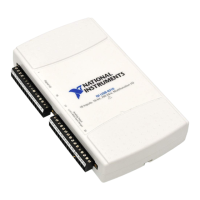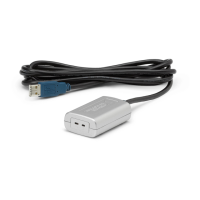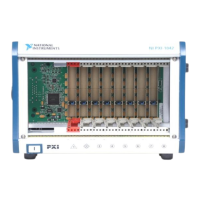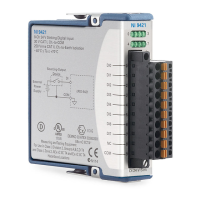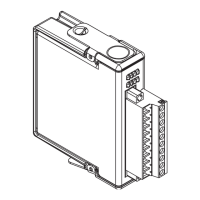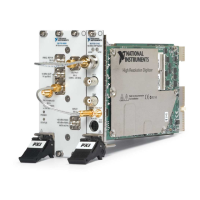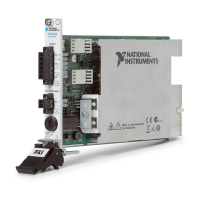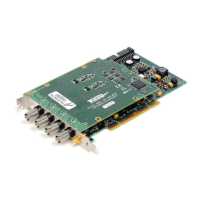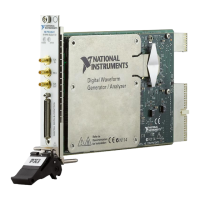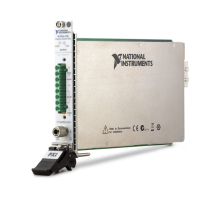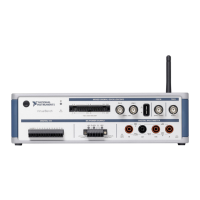Chapter 4 Analog Input
© National Instruments Corporation 4-9 NI USB-621x User Manual
• Hardware-Timed Acquisitions—With hardware-timed acquisitions,
a digital hardware signal, AI Sample Clock, controls the rate of the
acquisition. This signal can be generated internally on your device or
provided externally.
Hardware-timed acquisitions have several advantages over
software-timed acquisitions:
– The time between samples can be much shorter.
– The timing between samples is deterministic.
– Hardware-timed acquisitions can use hardware triggering.
Hardware-timed operations are buffered. In a buffered acquisition,
data is moved from the DAQ device’s onboard FIFO memory to a
PC buffer using USB signal streams or programmed I/O before it is
transferred to application memory. Buffered acquisitions typically
allow for much faster transfer rates than non-buffered acquisitions
because data is moved in large blocks, rather than one point at a time.
One property of buffered I/O operations is the sample mode. The
sample mode can be either finite or continuous:
– Finite sample mode acquisition refers to the acquisition of a
specific, predetermined number of data samples. After the
specified number of samples has been read in, the acquisition
stops. If you use a reference trigger, you must use finite sample
mode.
– Continuous acquisition refers to the acquisition of an unspecified
number of samples. Instead of acq
uiring a set numb
er of data
samples and stopping, a continuous acquisition continues until
you stop the operation. Continuous acquisition is also referred to
as double-buffered or circular-buffered acquisition.
If data cannot be transferred across the bus fast enough, the FIFO
becomes full. New acquisitions will overwrite data in the FIFO
before it can be transferred to host memory. The device generates
an error in this case. With continuous operations, if the user
program does not read data out of the PC buffer fast enough to
keep up with the data transfer, the buffer could reach an overflow
condition, causing an error to be generated.
